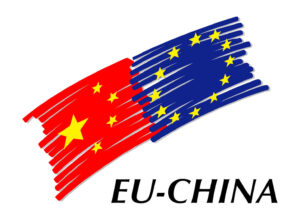
中欧消费品安全提升

This factsheet relates to fireworks. Fireworks are pyrotechnic articles intended for entertainment purposes.
Pyrotechnic articles are articles containing an explosive substance or an explosive mixture of substances designed to produce heat, light, sound, gas or smoke or a combination of such effects through self-sustained exothermic chemical reactions.
(This definition is taken from the Pyrotechnic Articles Directive 2013/29/EU, article 2.)
Fireworks are categorised into four categories according to their type of use, their purpose and level of hazard:
(This definition is taken from the Pyrotechnic Articles Directive 2013/29/EU, article 6, item 1.)
Guidance is available here. Click on “Pyrotechnic articles” in the list to see the guidance documents and agreed interpretations of the Forum of Notified Bodies.
A risk is defined as a hazard that could harm the health and safety of persons, and of domestic animals and property.
1. Thermal risks:
2. Mechanical risks:
3. Chemical (environmental) risks:
4. Other risks:
This is a list of examples of risks and associated hazards.
Fireworks shall have a mandatory EU type approval issued by a notified body, and the manufacturer must operate an internal production control scheme that is monitored by a notified body. To understand the role of notified bodies, see here.
The mandatory EU type approval is based on the harmonised standards (see below) and implies that the design of the firework is verified by an independent third-party, and that all relevant hazards and risks that may be associated with the product have been taken into account and adequate actions have been taken to mitigate these.
The production control can be based on random product checks at supervised intervals, quality assurance of the production process or product, unit verification, or full quality assurance. (Full quality assurance is required for category F4 fireworks that present the most significant risk.)
A list of EU Notified Bodies for pyrotechnic articles can be found on the NANDO website.
Specific examples of measures taken against dangerous baby carriers offered for sale in the European Union are available on the Safety Gate website. Type ‘fireworks’ into the free text search box (but without the quotation marks) and select the ‘Pyrotechnic articles’ Product Category to view notified examples. A better understanding of mistakes made in the safety assessment of fireworks, or their manufacture can help avoid their repetition.
Fireworks are regulated under the Directive on Pyrotechnic Articles.
The directive establishes safety, performance, and labelling criteria that fireworks must meet before they can be marketed in the EU.
In addition to these product specific requirements, fireworks must also comply with any other EU legislation applicable to them.
The following summarises some further key applicable laws:
“Harmonised standards” exist in the EU for fireworks. Fireworks complying with these standards are presumed to be in conformity with the essential safety requirements set out in the Directive if the standards are referenced in the Official Journal of the European Union (OJEU). Further information on, and the list of harmonised standards for fireworks is available from here.
The following standards apply to fireworks:
EN 15947-1:2015
The standard defines the terminology for fireworks.
EN 15947-2:2015
The standard describes categories and types of fireworks.
EN 15947-3:2015
The standard describes minimum labelling requirements for fireworks.
EN 15947-4:2015
The standard describes test methods for fireworks.
EN 15947-5:2015
The standard describes requirements for construction and performance of fireworks.
The most recent and relevant harmonised version published on the OJEU should be applied to the product to ensure that it is provided with the presumption of conformity.
Note: The full text of European standards can only be purchased from a national standardisation body. The following site of CEN (the European standardisation organisation) provides links to the national standardisations bodies’ websites. In addition, the China Standards Information Services Network can be used to access European standards.
The following are obligatory and should be placed on the label of the firework:
Detailed marking requirements are found in the harmonised standards and the applicable directives. They vary depending on the type of firework.
You may also visit the SPEAC ACADEMY to learn more about the EU Safety requirements.
The provided information was updated in 2022. Please note that some of the provided information could change during possible subsequent revisions of legislation, standards, and guidance documents. For any updates of official information on the EU product safety rules, please follow the Link to the webpage of the European Commission.
This document was produced with the financial support of the European Union. Its contents are the sole responsibility of SPEAC project and do not necessarily reflect the views of the European Union.